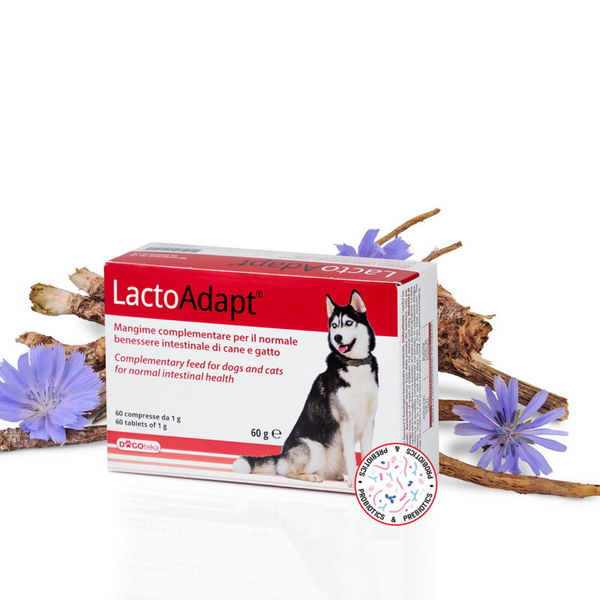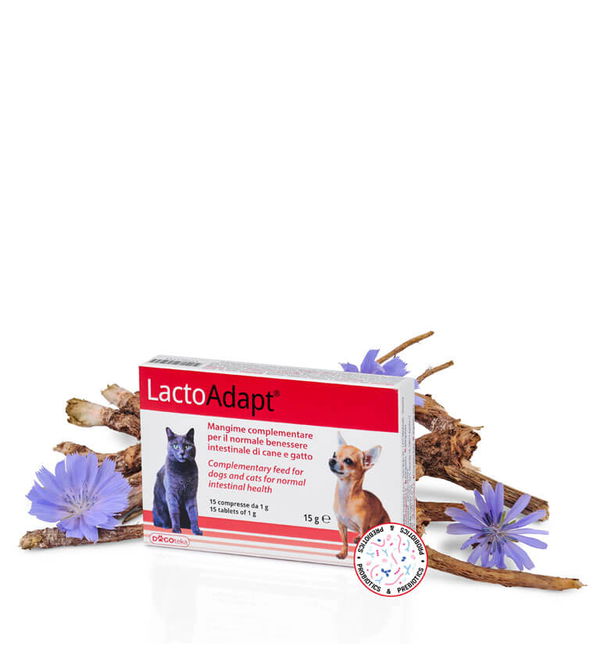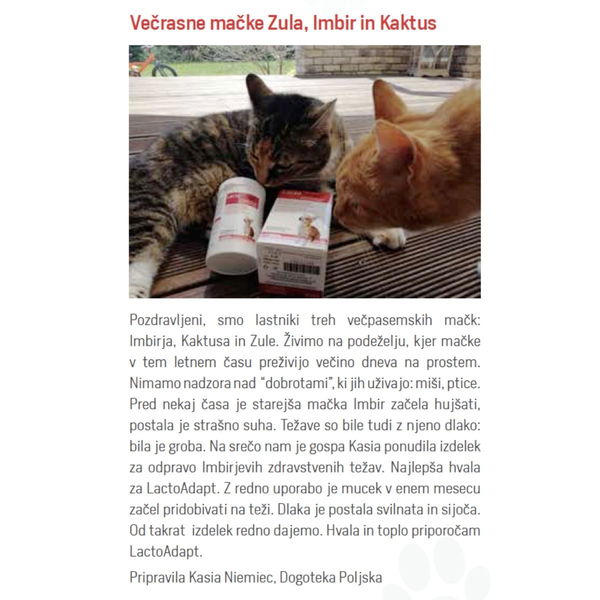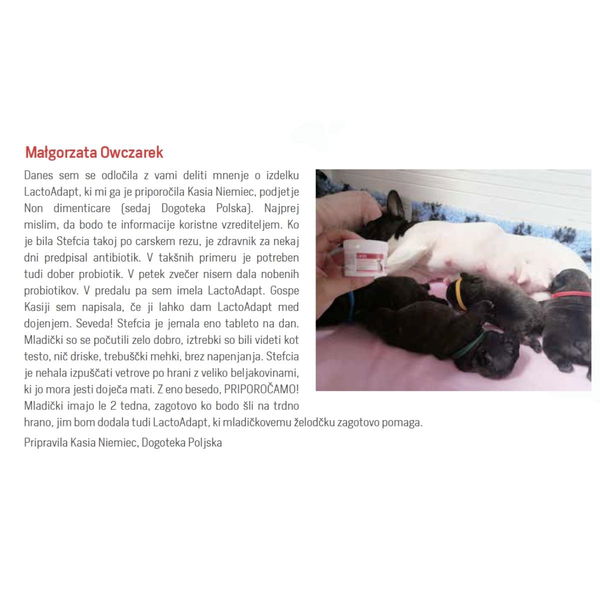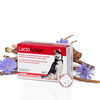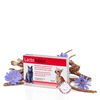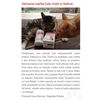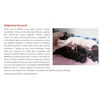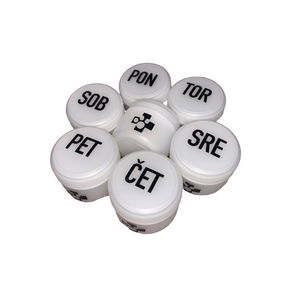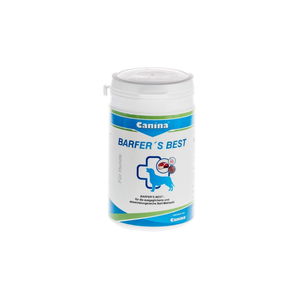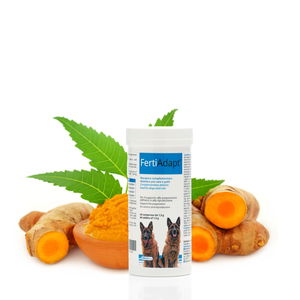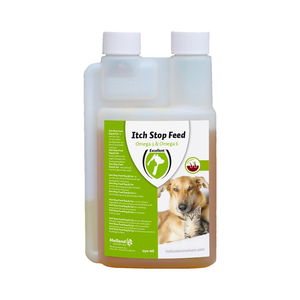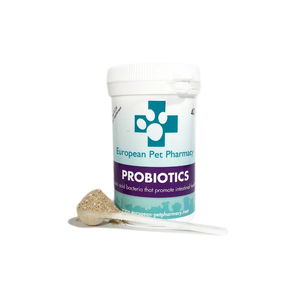LactoAdapt® for Digestive Regulation
- supplement for balancing gut flora
- against diarrhea or constipation (digestive disorders in dogs)
- recommended after antibiotic use or dietary changes
- in cases of mild poisoning
- natural complex
- suitable for all life stages (from puppies to senior dogs)
- contains pre and probiotics, vitamins, and niacin
- active ingredient is carob flour
- when changing environments, on vacation (stress)
- during seasonal changes
- can be taken continuously!
- Delivery fee
- Secure connection Your data is protected.
- Satisfaction Guarantee 14-Day Return Policy
Natural First Aid for Digestive Regulation in Cases of Intestinal Disturbances
The LactoAdapt® dietary supplement contains active ingredients that help restore balance to the intestinal microbial flora. It is recommended for diarrhea and constipation, and as a preventive measure before stressful events such as visits to the vet, long car rides, or changes in diet. It can also be given to pregnant and nursing dogs, ensuring both the mother and her puppies remain free from digestive issues.
Recommended use of LactoAdapt® during critical periods of change:
- Diet (e.g., nutritional stress) due to diet changes or accidental ingestion of inappropriate foods, feeding disorders, poisoning, etc.
- Environment (e.g., environmental stress) caused by psychological or logistical factors (changes in home, habits, environment, caregivers, travel)
- Health condition, such as acute diarrhea and the following recovery periods (upon advice from a trusted veterinarian).
- Medications, for example, taking special medications for existing diseases or after surgery, during and after antibiotic use.
Numerous studies have shown that prebiotic and probiotic supplements in dog diets have a positive effect on gastrointestinal health.
Active Ingredients
PREBIOTICS
Prebiotic Fiber Trio
- FRUIT OLIGOSACCHARIDES (FOS)
- INULIN
- MANNAN OLIGOSACCHARIDES (MOS) from brewer’s yeast
FOS, MOS, and INULIN are dietary fibers, non-digestible carbohydrates that are essential in both human and animal nutrition.
Chemically, FOS and inulin are fructans (carbohydrates composed of repeating fructose units) with a short chain (FOS) and a somewhat longer one (INULIN), found abundantly in foods such as chicory and Jerusalem artichoke. MOS are also dietary fibers but are composed of mannose repetitions, mainly sourced from yeast cell walls.
All three act prebiotically, meaning they can positively impact health by modulating the intestinal microbiota (FAO), a collection of millions of microorganisms typical of the intestinal tract of various mammals. These microorganisms beneficially and vitally affect the host's health. ((Suchodolski, 2011)).
Several studies consistently highlight the symbiosis between maintaining health and the balance of intestinal microbiota.
How do prebiotic fibers benefit the microbiota?
Humans and other mammals, including dogs and cats, lack the enzymes necessary to break down plant fibers (such as fructooligosaccharides and inulin) in the digestive tract (Flint HJ, 2012). Once ingested and arriving at the small intestine undigested, they are fermented by gut microbiota bacteria, positively affecting the abundance of specific bacterial groups with beneficial actions (e.g., Lactobacillus and Bifidobacterium). This action translates into positive effects on functions such as gut motility, cellular integrity, and microbial biochemical networks. (Scott KP, 2015).
Several studies have shown that including fructooligosaccharides in dog diets improves the digestion of various minerals and increases bifidobacteria, one of the beneficial microorganisms inhabiting both human and canine intestines, playing a critical role in immune system modulation and digestive functions (Carlo Pinna1, 2018).
However, it appears the prebiotic mechanism of MOS differs. Various studies have highlighted their ability to selectively bind to receptors present on the intestinal wall, making them inaccessible to pathogenic bacteria, consequently stimulating the growth of "good" bacteria.
CAROB FLOUR: The carob tree (Ceratonia siliqua L.) is an evergreen tree from the legume family, thriving in arid and semi-arid regions of the Mediterranean basin. Despite its high sugar content, carob pods are rich in insoluble fibers and micro-components, including phenolic compounds, inositols (mainly d-pinitol), and vitamins. (Aristea Gioxari 1, 2022).
YANG®: A blend of inactivated yeasts, particularly Saccharomyces cerevisiae (commonly known as brewer’s yeast) and Cyberlindnera jadinii.
Yeasts are single-celled eukaryotic organisms belonging to the fungus kingdom.
Brewer’s yeast (Saccharomyces cerevisiae) is used in animal nutrition largely due to its nutritional potency, being rich in valuable macronutrients like proteins, as well as trace elements such as selenium and chromium, B vitamins, and numerous other health-beneficial substances.
These actions are primarily attributable to the richness of these nutrients.
Cyberlindnera jadinii is also a yeast commonly utilized for its nutritional power, rich in proteins and vitamins.
PETMOD® NUCLEOTIDE FROM BREWER'S YEAST
Nucleotides are repeating units that make up nucleic acids (DNA and RNA), consisting of three components: a nitrogenous base (purine or pyrimidine), a five-carbon sugar, forming a nucleoside with the nitrogenous base, and one or more phosphate groups. Some studies conducted on fish have shown that dietary integration with nucleotides positively affected the intestinal level, enhancing growth and development. (Toshimasa Tsujinaka, MD, 1999)
This demand for nucleotide inclusion in pet food is growing, ultimately contributing to the normal functioning of the immune system and intestinal health of small pets as well. (Natalia Russo1, Inclusion of nucleotides in pet food: effect of heat processing, 2019)
BANANA FLOUR
The banana is a very popular fruit in the global market, consumed raw or processed, and also as a functional ingredient in various food products. Banana contains several bioactive compounds like phenols, carotenoids, biogenic amines, and phytosterols, offering numerous positive effects on health and well-being. Many of these compounds function as antioxidants, protecting the body from oxidative stress. (Balwinder Singh a, 2015)
Some studies have shown that the polyphenolic component, specifically flavonoids, have a beneficial role at the stomach level, in addition to their antioxidant action.
PROBIOTICS
ENTEROCOCUS FACCIUM DSM 10663/NCIMB 10415 (35 X 10^9 CFU/g)
What are probiotics?
In the feed sector, there are so-called zootechnical additives that stabilize intestinal flora. These are microorganisms that, when administered to animals, positively affect their intestinal flora; (Europeo, 2003) they can colonize the host animal’s intestine and consequently have a beneficial effect. The adhesion of probiotic microorganisms to the host's intestinal mucosa is considered a crucial step for colonization and subsequent interaction with the host's epithelium and immune system. (Mohsen Hanifeh, 2021).
In fact, both pathogenic and commensal microorganisms express various adhesion molecules on their surface, enabling them to bind to different surfaces within the host. Therefore, in selecting strains of microorganisms with probiotic actions, they must feature a strong binding capacity to the intestine.
Some studies have shown that this capability is linked to host specificity; therefore, for effective probiotic use, the bacterial species should be of host intestinal origin, and Enterococcus faecium DSM 10663/NCIMB 10415 used in the LactoAdapt product has this property.
Probiotics can enhance mucosal health through several mechanisms, including the production of short-chain fatty acids (SCFA), antimicrobial substances, modulation of immune response, competitive exclusion of pathogenic bacteria by interfering with their adhesion to the intestinal mucosa, and improving epithelial barrier functions.
INACTIVATED BACTERIA (LACTOBACILLUS HELVETICUS HA 122 (EX ACIDOPHILUS HA122), LACTOBACILLUS PARACASEI HA108, BIFIDOBACTERIUM BIFIDUM):
Inactivated microorganisms, also known as “tindalized,” undergo special thermal treatments that “inactivate” them, rendering them incapable of metabolism and reproduction. Their activities cannot be attributed to the ability to create new offspring and thus colonize the intestine; rather, they serve as a “foundation” upon which an appropriate substrate is reconstituted in the intestine for the recolonization of symbiotic flora.

